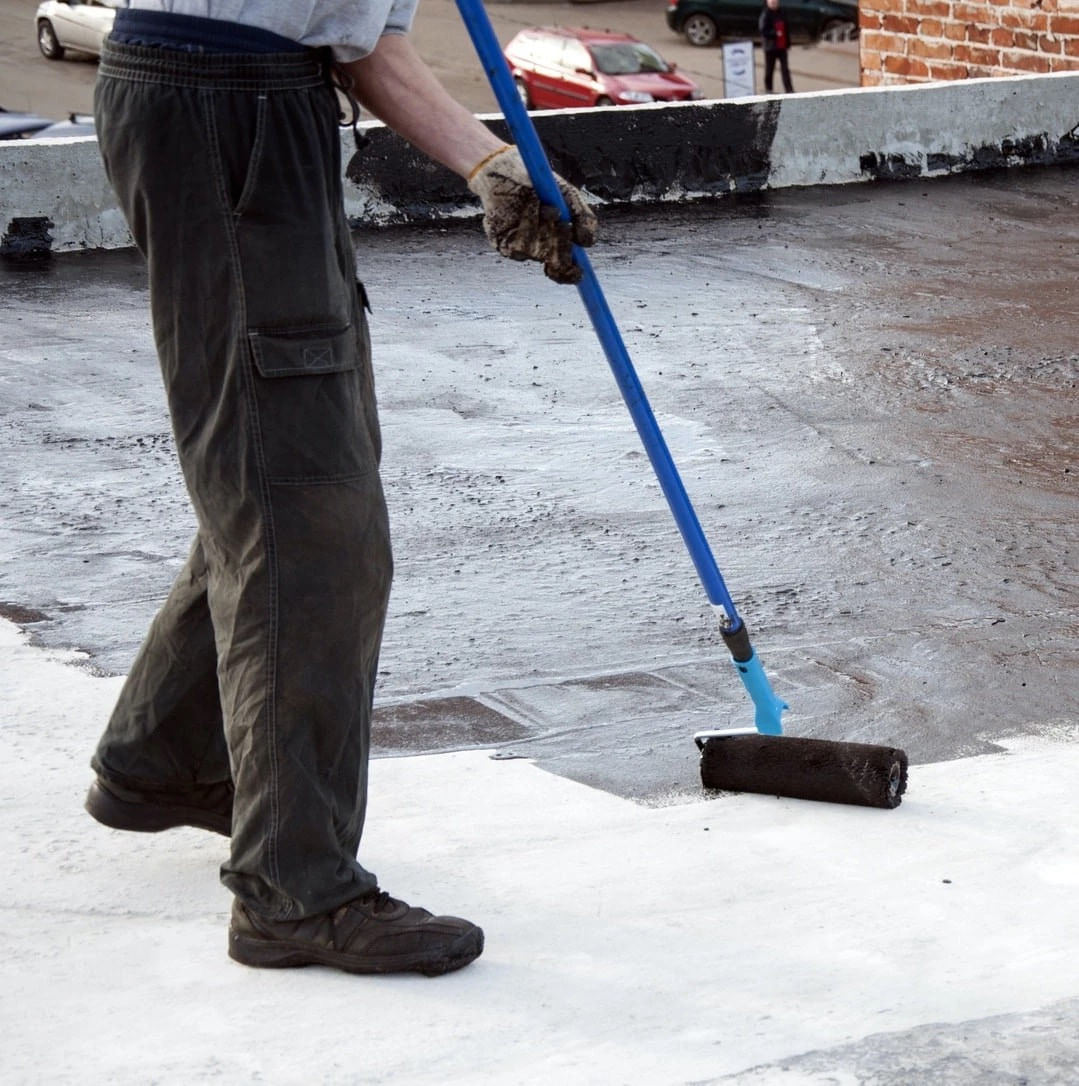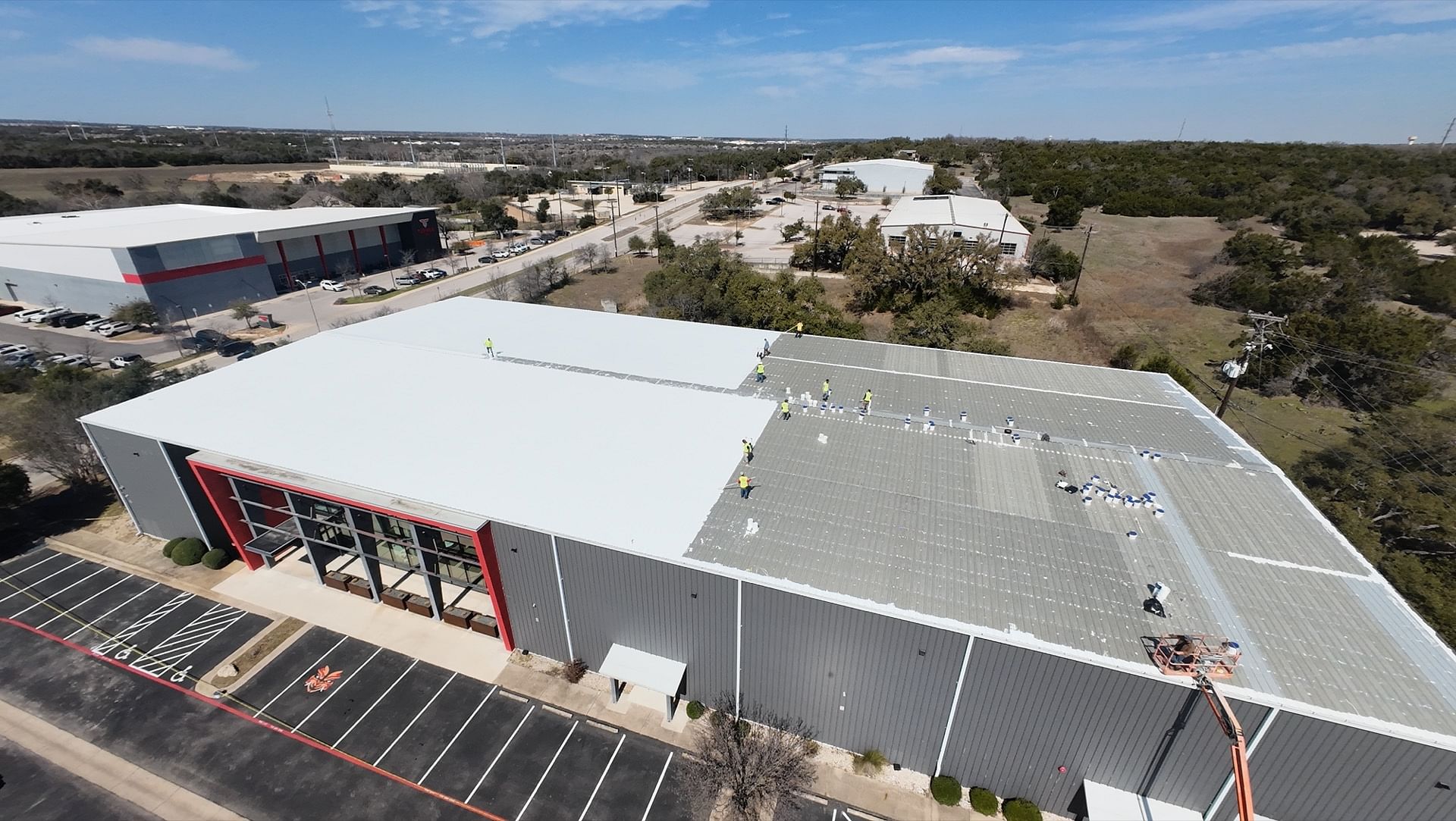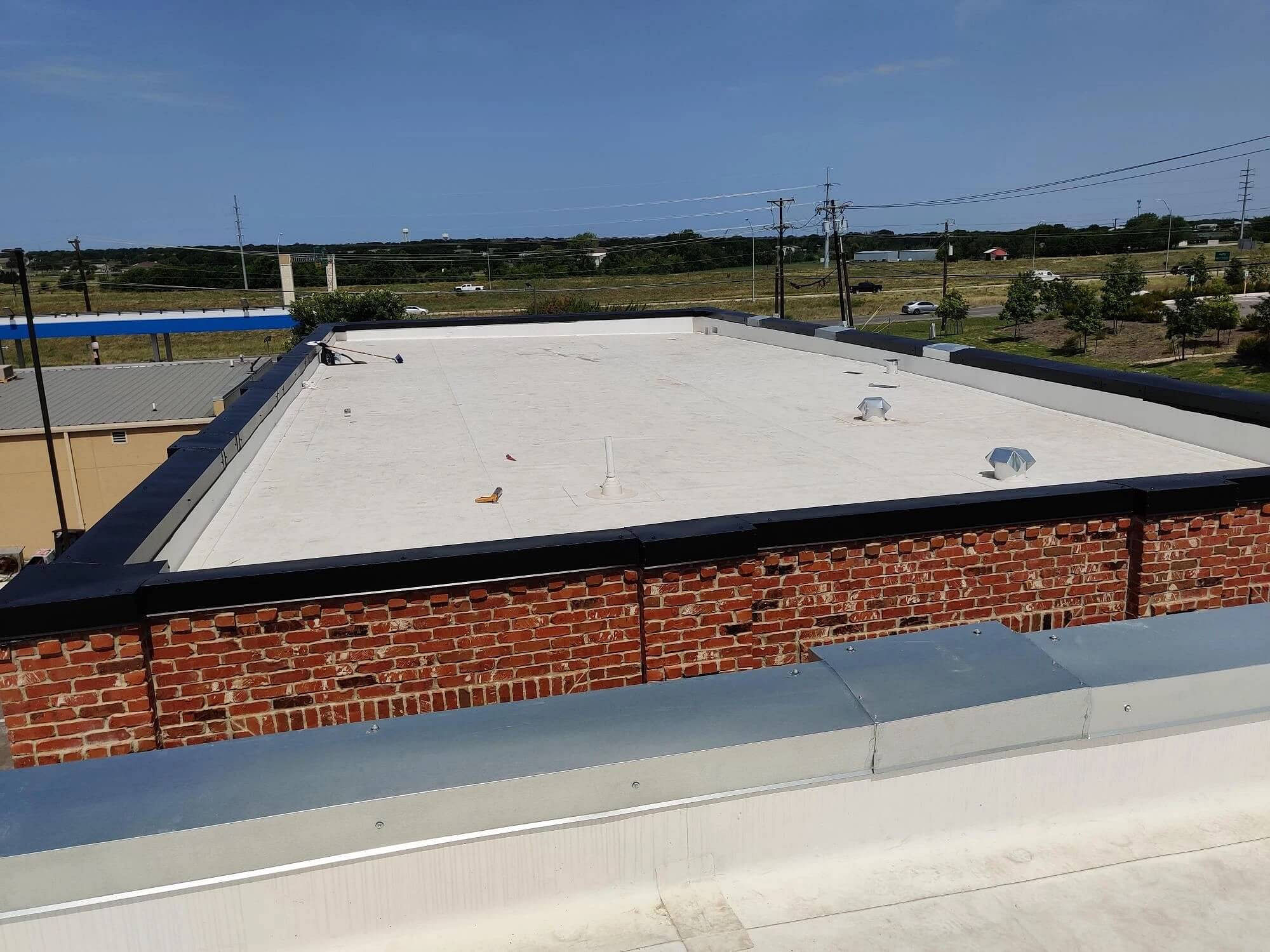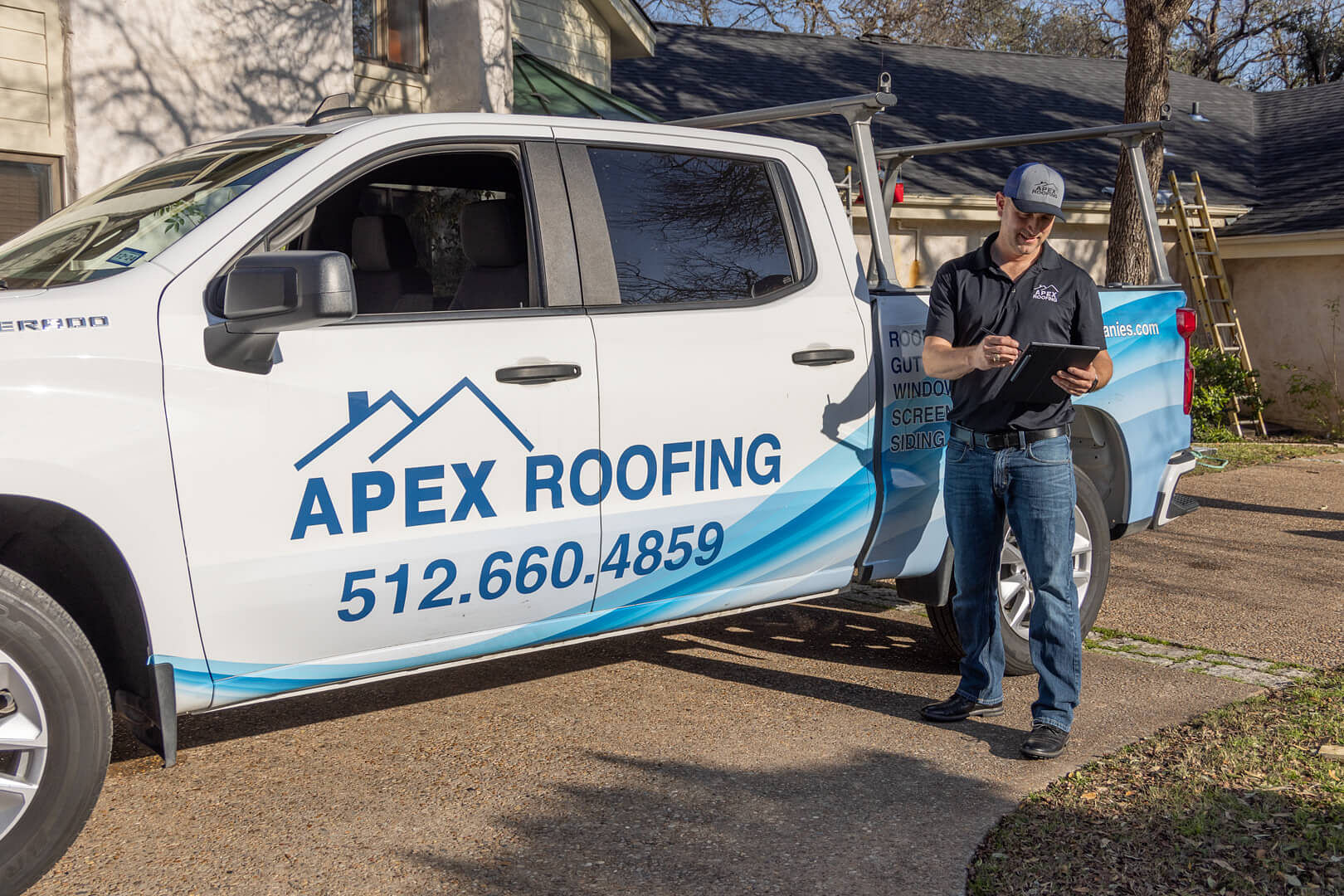Free Roof Quote – Call us today: 512-812-8454
Georgetown Historic Buildings: Preserve Roofs with Expert
Georgetown Historic Buildings: Preserve Roofs with Expert
Georgetown’s historic core tells its story through limestone walls, cast-iron trim, and rooflines that frame the Square, which means every slate, seam, and shingle carries both beauty and responsibility. Preserving that character calls for choices that respect original materials while shielding them from Central Texas weather. Roof coatings, applied with care, extend service life, control costs, and protect curb appeal without altering the architecture people come to see.
Coatings also help owners phase work in a sensible way. Rather than a disruptive tear-off, a restorative system can be scheduled around business hours and community events, which matters in a walkable district that thrives on daily foot traffic. The building stays open, the streetscape looks familiar, and the roof gains a protective skin that keeps water out and heat off.
What Does Central Texas Weather Do to Historic Roofs?
Age and climate team up to stress historic roofs. Metals expand and contract, slate can delaminate or shear at fasteners, clay tiles loosen at ridges and hips, and low-slope sections behind parapets quietly collect ponded water. Without a protective layer, ultraviolet radiation dries out sealants, microcracks spread at seams, and faded finishes accelerate heat gain.
Seasonal storms add another challenge. Sudden downpours push water into transitions, while high winds test every fastener and flashing. Hail can bruise aged membranes or chip brittle tiles. A coating system mitigates these forces by sealing hairline gaps, reducing surface temperature, and reinforcing the joints most likely to move when the weather turns rough.
How Coatings Answer Local Climate Challenges
Modern elastomeric chemistry gives coatings the flexibility to stretch and recover through daily temperature swings. Acrylic formulations reflect heat well and hold color, silicone excels where ponding water lingers, and polyurethane adds abrasion resistance in service zones. Matching the product to the problem is how roofs remain watertight through long, hot summers.
Coatings also stabilize small flaws before they grow. Embedded reinforcement fabrics bridge seams, penetrations, and edge details, so the system can flex as metal panels breathe or as a deck shifts slightly with moisture. By lowering the roof’s surface temperature, coatings reduce thermal cycling, which slows the fatigue that opens leaks over time.
Will a Coating Change the Look of a Historic Building?
A frequent worry is that a coating will read as a new layer that disrupts the façade. The right system is designed to be low profile and color-consistent with the existing roof, which means the familiar look remains while performance improves. Detailing matters most around cornices, chimneys, and parapets, where careful masking keeps ornament in the spotlight.
Color selection helps the roof blend rather than call attention to itself. Many acrylic systems can be tinted to muted grays, browns, or weathered greens common to historic metal, while still delivering reflectivity. Mockups on discreet sections let owners view options from the sidewalk and from second-story windows before committing to a final tone.
Match Chemistry to Material, Not the Other Way Around
Georgetown’s district hosts standing seam metal, pressed-tin mansards, clay barrel tile, slate, and hidden low-slope areas. Each substrate expands, sheds water, and ages differently. No single product suits every case, so success begins with a survey of materials, movement patterns, and drainage paths.
That survey guides a specification that pairs coating chemistry, primers, and reinforcement with the roof you have. A metal field panel may receive an acrylic topcoat for solar reflectance, while a behind-parapet section calls for silicone over reinforced seams. When assemblies change by area, the specification can split to keep each zone in its comfort lane.
Coating Choices for Metal Roofs
Metal responds well to coatings because panels are sound even when finishes chalk or fasteners loosen. Acrylic elastomerics offer strong reflectivity and stable color, which helps with cooling loads and appearance. Silicone thrives where dew or stormwater sits longer than ideal, and polyurethane builds scuff resistance for technician footpaths.
Service areas deserve special attention. Walkway pads positioned along predictable routes protect the film where tools and boots land most often. Where rooftop equipment generates heat or overspray, a slightly thicker build or a tougher topcoat guards against premature wear that could otherwise shorten the service interval.
Stop Rust Before You Start
Encapsulating active rust only delays failure, so corrosion control comes first. Crews remove oxidation, treat remaining surface with converters when appropriate, and spot-prime fasteners and cut edges with rust-inhibitive primers that bond to galvanized or painted steel. Clean metal plus the right primer is what allows an elastomeric topcoat to grip and last.
Seams and penetrations are reinforced to handle motion and weather. A base coat with embedded polyester fabric forms a flexible bridge over panel laps, ridge caps, and pipe flashings. That reinforcement works like a seat belt for the coating, sharing stress across a wider area so one movement point does not crack open a thin line of defense.
Should You Coat Slate or Clay Tile?
Tiles themselves are usually best left uncoated because breathability matters in historic envelopes. Dense slate and clay need to dry out after storms, and film-forming products can trap moisture in ways that lead to hidden damage. The preservation-friendly approach keeps tiles breathing while strengthening the details that leak most.
Targeted coatings at flashings, valleys, and under-ridge transitions make a measurable difference. Elastomeric mastics, paired with narrow fabrics, waterproof the metal-to-tile interfaces where age and movement open gaps. This strategy protects the assembly without changing the natural sheen of tile or stone that defines the building’s character.
Why Low-Slope Roofs Behind Parapets Are Strong Candidates
Behind parapets, older modified bitumen or built-up roofs often remain structurally sound but weathered. A high-solids silicone coating resists ponding water better than many alternatives, which is useful in areas that drain slowly. Where the slope is positive and drainage is reliable, select acrylics deliver superior color stability and strong UV protection.
Reinforcing every field seam, drain bowl, and penetration is nonnegotiable on low-slope sections. Polyester fabric woven into the base coat adds tensile strength that fights splitting as the deck moves with temperature and moisture. That reinforcement, followed by an even topcoat, creates a monolithic surface that sheds water efficiently.

How Do You Know a Roof Is a Good Coating Candidate?
Evaluation comes before enthusiasm. Wet insulation, extensive rot, or widespread delamination push a roof toward replacement, while sound surfaces with localized issues are ideal for restoration. Infrared scans, moisture probes, and selective test cuts reveal what lives beneath the surface so decisions are based on facts rather than hope.
Adhesion tests and small mockups complete the picture. APEX Roofing sets trial patches across representative zones, then measures pull strength after cure. This step confirms primer selection and film build, and it highlights areas that may need extra cleaning or reinforcement before production starts.
Preparation Sets the Stage for Performance
Preparation determines performance more than any other factor. Low-pressure washing and biodegradable cleaners remove chalk, dust, and biological growth without forcing water under flashings. Fasteners are tightened or replaced, minor sheet-metal patches are added at stress points, and existing splits are sealed before any topcoat comes out of a pail.
Safety and containment matter on older buildings. Lead-based paints may still be present on trim or decorative metal, so work practices include appropriate protection and debris control. A tidy job site, protected landscaping, and clear communication with occupants keep projects running smoothly in active downtown blocks.
The Right Primer Makes the System Last
Primers create the chemical handshake between old surfaces and new coatings. Bonding primers help acrylic systems grip aged single-ply membranes, while rust-inhibitive primers lock down cleaned ferrous metal. Even silicone systems that sometimes allow primer-free application may need specialty primers over certain paints, so field trials and manufacturer guidance steer the call.
Using one primer everywhere might seem simpler, yet targeted priming usually outperforms a blanket approach. High-movement seams can receive a more elastic base, while broad field areas get a primer that maximizes adhesion. This selective strategy uses materials where they matter most and improves durability without inflating cost.
Why Film Thickness Matters
Coatings are measured in mils, or thousandths of an inch, and that number ties directly to service life. A typical system includes a base coat with embedded fabric at seams followed by a reflective topcoat that brings the field to the specified build. Too thin means the film cannot stretch through hot afternoons and cool nights without fatigue.
Quality control keeps thickness on target. Wet-mil gauges during application and dry-mil readings after cure verify coverage, especially along edges and details where thin spots tend to hide. Meeting the specification is how owners secure the warranty term they expect rather than a season of short-lived shine.
When Is the Best Time To Apply a Coating?
Spring and fall offer the friendliest combination of temperature, humidity, and dew point for proper curing. Summer work remains possible, although high heat shortens open time and can complicate production on darker surfaces. Early starts, shade planning, and vigilant weather monitoring reduce risk when clouds build faster than the forecast.
Scheduling with the street in mind matters in Georgetown. Downtown events, deliveries, and neighboring business hours shape lift placement and daily plans. APEX Roofing coordinates staging and access to maintain safety and reduce disruption, which keeps projects welcome on blocks where store owners rely on consistent customer flow.
Can Coatings Improve Energy Performance?
High-reflectivity coatings lower roof surface temperatures, which can reduce heat transfer into the building and help HVAC systems during peak hours. Historic masonry and wood framing benefit as cooler roofs moderate expansion and contraction across old joints, which lowers stress on parapets, cornice lines, and interior plaster.
Savings vary with insulation levels and exposure, yet owners routinely notice softer indoor temperature swings after reflective work. Beyond comfort, equipment runs less at the margins on hot afternoons, which can extend service life. Energy is only part of the value, but it is a welcome bonus for long, bright Texas summers.
How Do You Navigate Historic Review?
Exterior changes visible from the public way often require review or a certificate of appropriateness. Roof color, sheen, and detailing can fall within that scope, so early coordination avoids delays. APEX Roofing documents existing conditions, proposes color-matched mockups, and clarifies that the system is restorative rather than a visual alteration.
Clear records reduce friction with staff and commissioners. Photos, product data, and small samples help reviewers understand that the project preserves character while solving water and heat problems. When the process is straightforward, owners spend less time in meetings and more time watching a predictable schedule unfold.
What Maintenance Keeps a Coating Healthy?
Routine care keeps coatings performing. Twice-yearly inspections catch mechanical damage, seam movement, or clogged drains before small issues become leaks. Gentle cleaning removes dust and pollen that dull reflectivity, and minor touch-ups with the original product maintain continuity at high-traffic or high-movement spots.
Foot-traffic control matters as much as chemistry. Designated paths and walkway pads protect the film from concentrated wear, while a simple roof-access policy prevents unplanned visits that scuff fresh surfaces. With a short checklist and a few planned minutes each season, owners preserve the benefits that the system delivers.
- Inspect in spring and fall to catch seasonal movement early.
- Clear drains and scuppers so water leaves the roof quickly.
- Limit foot traffic to dedicated paths and use walkway pads where needed.
- Keep a small repair kit of the specified coating and fabric for touch-ups.
When Should You Recoat?
Recoat timing depends on exposure and product, though most systems suggest evaluation near the midpoint of the warranty term. Subtle chalking, visible thinning at ridges, or early hairline cracks at high-movement details signal time for a refresh. Recoating a roof that was cleaned and primed correctly the first time is typically straightforward.
The recoat step is where restoration outshines replacement on long horizons. The roof remains in service, landfill waste stays minimal, and operations continue with limited interruption. Predictable intervals help with budgeting as well, since owners can plan for upkeep rather than react to surprise failures.

How Do You Know a Roof Is a Good Coating Candidate?
Evaluation comes before enthusiasm. Wet insulation, extensive rot, or widespread delamination push a roof toward replacement, while sound surfaces with localized issues are ideal for restoration. Infrared scans, moisture probes, and selective test cuts reveal what lives beneath the surface so decisions are based on facts rather than hope.
Adhesion tests and small mockups complete the picture. APEX Roofing sets trial patches across representative zones, then measures pull strength after cure. This step confirms primer selection and film build, and it highlights areas that may need extra cleaning or reinforcement before production starts.
Preparation Sets the Stage for Performance
Preparation determines performance more than any other factor. Low-pressure washing and biodegradable cleaners remove chalk, dust, and biological growth without forcing water under flashings. Fasteners are tightened or replaced, minor sheet-metal patches are added at stress points, and existing splits are sealed before any topcoat comes out of a pail.
Safety and containment matter on older buildings. Lead-based paints may still be present on trim or decorative metal, so work practices include appropriate protection and debris control. A tidy job site, protected landscaping, and clear communication with occupants keep projects running smoothly in active downtown blocks.
The Right Primer Makes the System Last
Primers create the chemical handshake between old surfaces and new coatings. Bonding primers help acrylic systems grip aged single-ply membranes, while rust-inhibitive primers lock down cleaned ferrous metal. Even silicone systems that sometimes allow primer-free application may need specialty primers over certain paints, so field trials and manufacturer guidance steer the call.
Using one primer everywhere might seem simpler, yet targeted priming usually outperforms a blanket approach. High-movement seams can receive a more elastic base, while broad field areas get a primer that maximizes adhesion. This selective strategy uses materials where they matter most and improves durability without inflating cost.
Why Film Thickness Matters
Coatings are measured in mils, or thousandths of an inch, and that number ties directly to service life. A typical system includes a base coat with embedded fabric at seams followed by a reflective topcoat that brings the field to the specified build. Too thin means the film cannot stretch through hot afternoons and cool nights without fatigue.
Quality control keeps thickness on target. Wet-mil gauges during application and dry-mil readings after cure verify coverage, especially along edges and details where thin spots tend to hide. Meeting the specification is how owners secure the warranty term they expect rather than a season of short-lived shine.
When Is the Best Time To Apply a Coating?
Spring and fall offer the friendliest combination of temperature, humidity, and dew point for proper curing. Summer work remains possible, although high heat shortens open time and can complicate production on darker surfaces. Early starts, shade planning, and vigilant weather monitoring reduce risk when clouds build faster than the forecast.
Scheduling with the street in mind matters in Georgetown. Downtown events, deliveries, and neighboring business hours shape lift placement and daily plans. APEX Roofing coordinates staging and access to maintain safety and reduce disruption, which keeps projects welcome on blocks where store owners rely on consistent customer flow.
Can Coatings Improve Energy Performance?
High-reflectivity coatings lower roof surface temperatures, which can reduce heat transfer into the building and help HVAC systems during peak hours. Historic masonry and wood framing benefit as cooler roofs moderate expansion and contraction across old joints, which lowers stress on parapets, cornice lines, and interior plaster.
Savings vary with insulation levels and exposure, yet owners routinely notice softer indoor temperature swings after reflective work. Beyond comfort, equipment runs less at the margins on hot afternoons, which can extend service life. Energy is only part of the value, but it is a welcome bonus for long, bright Texas summers.

How Do Coatings Help With Hail and Foot Traffic?
No coating turns a delicate substrate into armor, yet elastomeric films absorb and distribute impact energy in useful ways. Small hail is less likely to fracture aged membranes or open microfissures at seams when a flexible topcoat sits above them. That cushion slows the march from surface bruise to active leak.
Regular service routes deserve extra protection. Walkway pads in corridors where technicians move between units curb scuffs and tool drops that can do as much damage as weather. A small investment in paths often returns more life than an equal amount of extra film spread thinly across a large field.
Why Are Coatings a Sustainable Choice?
Extending the life of a roof keeps original materials in place, reduces tear-off waste, and avoids the carbon cost of manufacturing and transporting a full replacement. Many modern coatings feature low volatile organic compound content, which supports better job-site air quality and aligns with responsible building practices.
Cooler roof surfaces also help the broader community. Reflective systems reduce heat island effects in walkable downtown areas, which supports comfort at the street level. Preservation and sustainability point in the same direction here, since the greenest roof is often the roof you already have, maintained well and kept in service.
What Should You Expect for Budgets, Schedules, and Warranties?
Owners value clarity, so scopes separate must-do repairs from nice-to-have upgrades. APEX Roofing builds schedules around weather patterns and occupancy needs, then ties labor and materials to published warranty tiers so expectations match reality. The result is a project that feels predictable from adhesion tests to final punch.
Contingency planning keeps momentum when surprises emerge. Hidden wet areas receive targeted repairs rather than wholesale resets, and communication remains steady so decisions are quick and informed. When the plan is transparent, the project stays on track even when a few details change along the way.
What Documentation Should You Keep?
Historic work benefits from a simple but complete paper trail. Photo logs, as-built diagrams of coated areas, product data sheets, and warranty certificates belong in the building’s maintenance file. These documents ease future recoats, smooth insurance conversations after storms, and support historic review if visible elements were included.
Digital storage helps everyone involved. When records live in an accessible folder, new managers, tenants, and reviewers can see what was done, where, and with which products. The next service interval starts ahead of schedule because the groundwork is already in place.
Why Jobsite Craft and Care Matter on Historic Buildings
Craft matters as much as chemistry on older buildings. Crews trained to move safely around clay ridges, copper flashings, and ornate parapets minimize incidental damage while they work. Staging protects façades and landscaping, and temporary coverings keep water out of open repairs overnight.
Community context shapes daily choices. Tidy job sites, clear signage, and respectful noise practices maintain goodwill on blocks where businesses depend on passersby. A polished process is part of preservation, because a project that neighbors welcome is a project that finishes strong.
Start With a Roof and Façade Health Check
A quick health check often reveals low-cost fixes that boost coating performance. Broken gutters drive water back onto low-slope sections, tree litter from mature oaks traps moisture at valleys, and missing mortar at parapet caps allows wind-driven rain to track behind flashings. Addressing these issues first builds a better foundation for the coating.
The same inspection can prioritize long-term improvements. Redirected downspouts, improved drain strainers, and trimmed branches reduce future maintenance. When the envelope works as a system, the coating does not have to fight preventable problems on its own.
How Should You Approach Color and Aesthetics?
A well-chosen palette ties performance to appearance on visible roofs. Historic metal often lives in muted tones, and many manufacturers can tint acrylic systems to blend with existing finishes while maintaining reflectivity. The goal is a roof that disappears into the composition of the building rather than a new focal point.
Viewing angles influence perception. A color that looks subdued at street level may read brighter from a neighboring second-story window. Small on-roof mockups viewed at different times of day help owners decide with confidence before production begins.
Why Do Testing and Mockups Remove Guesswork?
Older buildings often carry multiple repairs layered over decades. Pull tests and small mockups reveal adhesion on sun-baked slopes versus shaded sections, which can differ more than expected. Results guide primer choice and film build so the specification is tuned to each condition.
Where substrates change by area, the plan can split gracefully. Metal over the original structure might receive one system while modified bitumen over an addition gets another. Testing avoids one-size-fits-all assumptions and concentrates budget where it returns the most life.
Coatings as One Tool in a Preservation Toolkit
Coatings serve the larger goal of keeping historic buildings useful, safe, and beautiful. They extend life, reduce risk, and make daily operations easier for current owners while honoring the past. Preservation works best when practical maintenance supports the architecture people love.
That balance is what keeps Georgetown vibrant. When roofs shed water, façades stay dry, and interiors stay comfortable, landmark spaces remain open for business, community, and culture. Quiet maintenance is the behind-the-scenes work that lets a historic district feel timeless.
Why Work With APEX Roofing?
APEX Roofing guides Central Texas owners through investigation, specification, and careful craft. Teams document existing conditions, coordinate with local reviewers when needed, and recommend systems that match the roof you have rather than the roof a brochure imagines. Field foremen manage site safety and cleanliness, while project managers keep communication clear from day one to final walk-through.
Experience also shows up in the details. From adhesion testing to film-thickness verification, quality checks are built into the schedule so the finished system meets its promise. When the work ends, owners have records in hand and a maintenance plan that keeps the roof performing season after season.
Ready To Protect Your Historic Roof?
If you steward a historic building in Georgetown and want reliable protection without sacrificing character, a coating system may be the most practical next step. APEX Roofing can evaluate your roof, run adhesion tests, and design a plan that respects the original architecture while delivering modern performance.
Reach out to schedule a roof assessment, and let a friendly, detail-minded crew help your building look great, shed water correctly, and stay ready for the next Texas season. A thoughtful coating plan today is what keeps tomorrow’s storm from becoming tomorrow’s headache.

